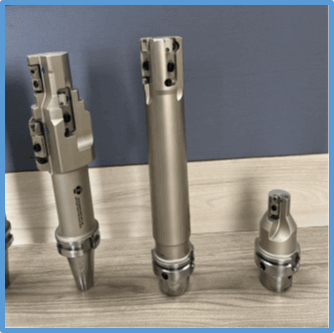Center drills
Brands

Center Drill: Understanding
Dimensions, Types, and Applications of center drill
In the realm of precision machining,
the center drill emerges as a foundational tool, facilitating accurate drilling
and alignment processes. Often overlooked in favor of larger, more conspicuous
tools, the center drill and its associated dimensions play a crucial role in
achieving impeccable results. This article delves into the intricacies of the
center drill, its dimensions, and its indispensable role in various
applications.
1. Center
Drill
A center drill, also known as a
centering drill or spot drill, is a specialized tool designed to create a
conical hole or "spot" in a workpiece. This spot serves as a starting
point for subsequent drilling operations, ensuring precise alignment and
minimizing the risk of drill wander.
2. Center
Drill Bit: Anatomy and Functionality
The center drill bit, characterized by its unique geometry,
comprises:
● Tip Angle: Typically featuring a 60°
tip angle, optimized for creating an accurate starting point.
●
Body:
Provides rigidity and stability during the drilling process.
● Shank: Facilitates secure mounting in
the drilling machine or lathe.
The
combination of these elements enables the center drill to produce a precisely
centered spot, essential for achieving accuracy in subsequent machining
operations.
3.
Varieties of Center Drills
Center drills come in various configurations to cater to
diverse needs:
● Standard Center Drills: Featuring a
60° tip angle, ideal for general-purpose applications.
●
Bell
Center Drills: Characterized by a wider tip, facilitating deeper drilling
operations.
● Combined Drill and Countersink Tools:
Combining drilling and countersinking functionalities, optimizing efficiency in
multi-step processes.
4. Center Drill Dimensions:
Decoding the Specifications
Understanding center drill dimensions is paramount for
selecting the right tool for the job:
● Tip Diameter: Ranging from miniature
sizes for intricate tasks to larger diameters for robust applications.
●
Overall
Length: Varies based on the drilling depth requirements, with longer drills
accommodating deeper holes.
● Shank Diameter: Tailored to fit
specific machine requirements, ensuring compatibility and stability during
operation.
5. Applications and
Benefits of center drills
The versatility of center drills extends across various
industries and applications:
● Precision Machining: Serving as an
essential tool for creating accurate starting points in complex machining
operations.
●
Woodworking:
Facilitating precise hole alignment in furniture and cabinetry construction.
● Metalworking: Ensuring optimal
alignment in metal fabrication processes, enhancing product quality and
consistency.
The primary
benefits include improved accuracy, enhanced workpiece finish, and reduced risk
of tool breakage, underscoring the critical role of the center drill in
achieving superior machining outcomes.
Conclusion
The center drill, with its meticulous design and
precise dimensions, exemplifies the marriage of form and function in the world
of machining. Whether you're navigating the nuances of center drill dimensions
or harnessing the capabilities of specialized center drills, the pursuit of
precision remains paramount. As industries continue to push the boundaries of
innovation, the center drill stands as a testament to the timeless principles
of accuracy, efficiency, and excellence in craftsmanship.

